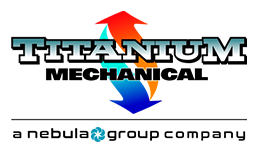As Toronto experiences another frigid January, keeping your heating system in top condition isn’t just about comfort—it’s essential for protecting your business or home. With temperatures regularly dipping below freezing and spring still months away, now is the critical time to ensure your heating system and furnace parts can handle the demanding Canadian winter.
Understanding the Impact of Toronto’s Winter on Your HVAC System
Toronto’s unique winter climate, with its frequent temperature fluctuations and heavy snowfall, puts exceptional strain on heating systems. When outdoor temperatures plunge to -20°C or lower, your heating system works overtime to maintain indoor comfort. This intense operation can lead to increased wear and tear of furnace parts, making preventative maintenance crucial for avoiding system failures during peak winter months.
Signs Your Heating System Needs Professional Attention
Your heating system often provides warning signs before major problems develop. These can include uneven heating throughout your space, unusual noises during operation, or unexpected increases in energy bills. For commercial properties, tenant complaints about temperature inconsistencies or unusual odors should never be ignored. Rather than waiting for these signs to worsen, proactive maintenance can address potential issues before they become costly emergencies.
The Value of Preventative Maintenance Plans
Investing in a preventative maintenance plan provides significant long-term benefits for Toronto property owners. Regular maintenance not only extends equipment life but also helps maintain energy efficiency during the harsh winter months. A well-maintained system typically uses 15-20% less energy than a neglected one. For commercial properties, this can translate into thousands of dollars in savings over the winter season.
Heat Pump Optimization for Winter Performance
Heat pumps require special attention during Toronto winters. While these systems are highly efficient, their performance can decrease as temperatures drop below freezing. Professional maintenance ensures your heat pump maintains its efficiency even in extreme cold. This includes checking refrigerant levels, cleaning coils, and verifying defrost cycle operation—all crucial for optimal winter performance.
Boiler and Furnace Care: Essential Winter Preparations
Boilers and furnaces form the backbone of many Toronto heating systems. For commercial properties, regular boiler maintenance is particularly critical as these systems often heat multiple units or floors. Professional technicians check combustion efficiency, inspect heat exchangers for cracks, and ensure all safety controls are functioning properly. These steps not only prevent breakdowns but also help maintain safe operation throughout the winter.
Planning Ahead: Spring 2025 System Updates
While managing current winter challenges, forward-thinking property owners should also consider planning for system updates in spring 2025. Modern HVAC technologies offer significant improvements in energy efficiency and control capabilities. Spring provides an ideal window for major system upgrades or replacements, allowing you to complete work before the next heating season begins.
Emergency Response and Rapid Repair Services
Despite best maintenance efforts, heating emergencies can still occur during peak winter months. Having a reliable HVAC service provider with 24/7 emergency response capabilities is essential for Toronto property owners. Quick access to professional repair services can mean the difference between a minor inconvenience and a major problem, especially during January’s coldest days.
Toronto’s winter challenges demand a proactive approach to HVAC maintenance and repair. Whether you’re managing a commercial property or protecting your home, professional HVAC services provide the expertise needed to keep your heating system running efficiently through the winter months and beyond. By addressing maintenance needs now and planning for future improvements, you can ensure reliable heating performance while optimizing energy efficiency and reducing long-term costs.

